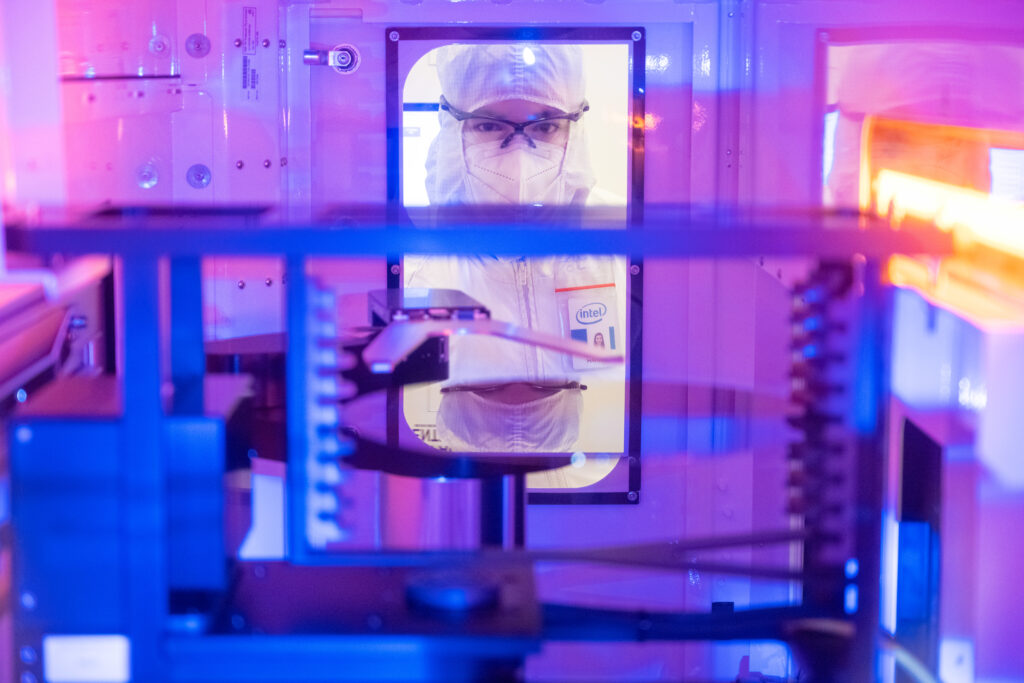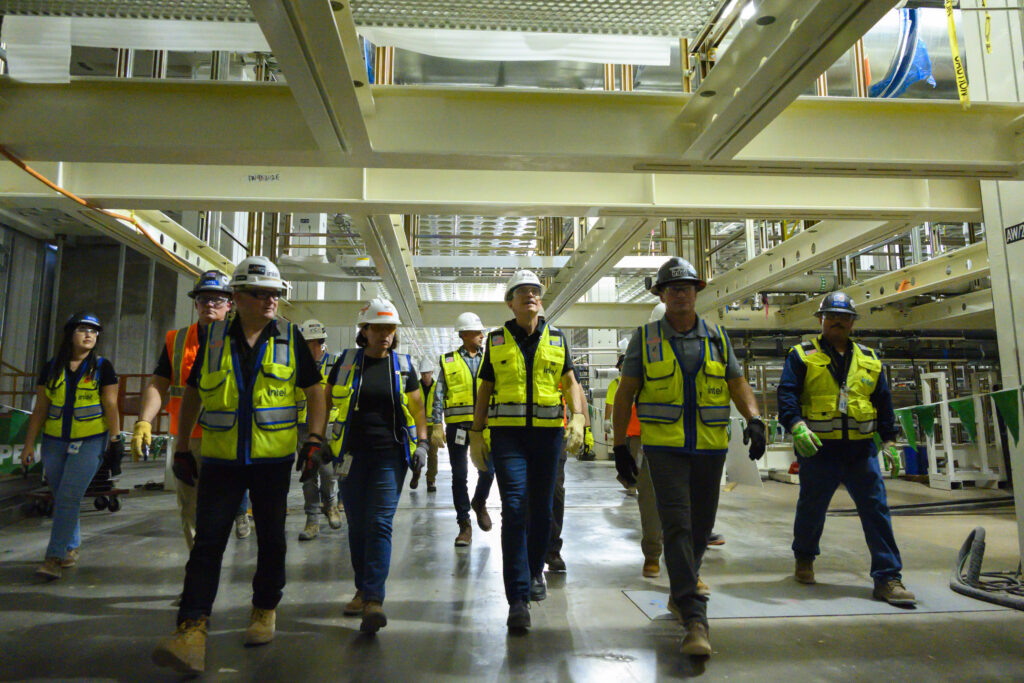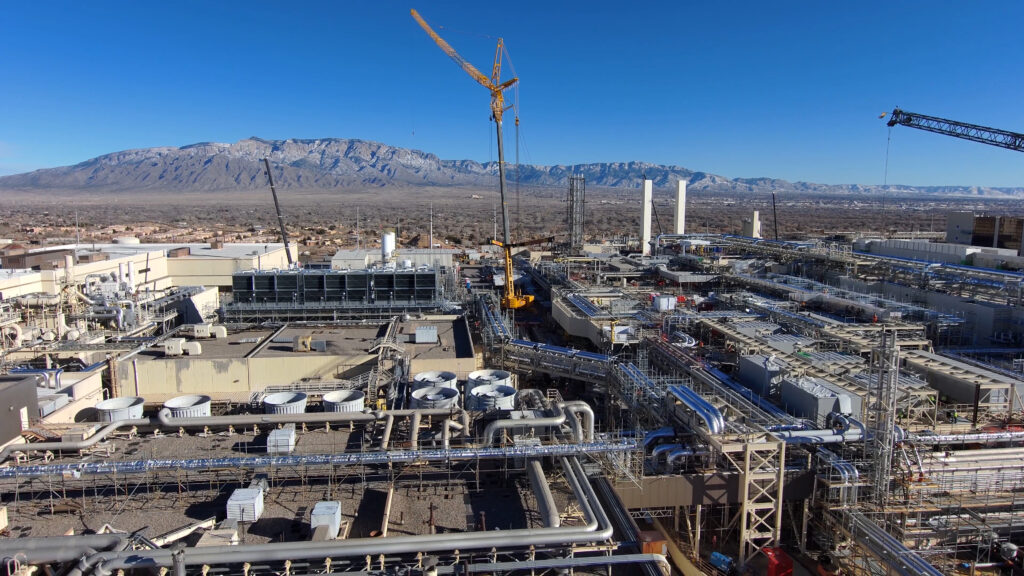The proposed funding, coupled with an investment tax credit and eligibility for CHIPS Act loans, would help Intel advance American semiconductor manufacturing and technology leadership in the AI era.
News Highlights
* The U.S. Department of Commerce has proposed up to $8.5 billion in direct funding through the CHIPS and Science Act to advance Intel’s commercial semiconductor projects in Arizona, New Mexico, Ohio and Oregon.
* Intel also expects to benefit from a U.S. Treasury Department Investment Tax Credit (ITC) of up to 25 percent on more than $100 billion in qualified investments and eligibility for federal loans up to $11 billion.
* Proposed funding supports Intel’s previously announced plans to invest more than $100 billion in the U.S. over five years to expand U.S. chipmaking capacity and capabilities critical to economic and national security and acceleration of emerging technologies, such as AI.
* Intel’s investments are expected to create more than 10,000 company jobs and nearly 20,000 construction jobs, and to support more than 50,000 indirect jobs with suppliers and supporting industries.
SANTA CLARA, Calif., and WASHINGTON—Intel and the U.S. Department of Commerce have signed a non-binding preliminary memorandum of terms (PMT) for up to $8.5 billion in direct funding to Intel for commercial semiconductor projects under the CHIPS and Science Act, the Biden-Harris Administration announced in March.
CHIPS Act funding aims to increase U.S. semiconductor manufacturing and research and development capabilities, especially in leading-edge semiconductors. Intel is the only American company that both designs and manufactures leading-edge logic chips. The proposed funding would help advance Intel’s critical semiconductor manufacturing and research and development projects at its sites in Arizona, New Mexico, Ohio and Oregon, where the company develops and produces many of the world’s most advanced chips and semiconductor packaging technologies, according to a release from Intel Corporation.
“Today is a defining moment for the U.S. and Intel as we work to power the next great chapter of American semiconductor innovation,” said Intel CEO Pat Gelsinger, in the release. “AI is supercharging the digital revolution and everything digital needs semiconductors. CHIPS Act support will help to ensure that Intel and the U.S. stay at the forefront of the AI era as we build a resilient and sustainable semiconductor supply chain to power our nation’s future.”
Together, the CHIPS Act proposed funding and Intel’s previously announced plans to invest more than $100 billion in the U.S. over five years constitute one of the largest public-private investments ever made in the U.S. semiconductor industry. The historic investment will create thousands of new company positions and construction jobs, foster U.S.-based R&D, strengthen U.S. supply chains, and help ensure American leadership in leading-edge semiconductor manufacturing and technology capabilities.
The announcement demonstrates the U.S. government’s confidence in Intel’s leadership and commitment to expanding U.S. chipmaking capacity and capabilities. It is an investment in America’s technology future, bringing innovation, opportunity, and jobs to America.
“Today’s announcement is a massive step towards ensuring America’s leadership in manufacturing for the 21st century,” said U.S. Secretary of Commerce Gina Raimondo, in the release. “With this agreement, we are helping to incentivize over $100 billion in investments from Intel— marking one of the largest investments ever in U.S. semiconductor manufacturing, which will create over 30,000 good-paying jobs and ignite the next generation of innovation. This announcement is the culmination of years of work by President Biden and bipartisan efforts in Congress to ensure that the leading-edge chips we need to secure our economic and national security are made in the U.S.”

Intel employees in clean room “bunny suits” work at Intel’s D1X factory in Hillsboro, Oregon. The grand opening of D1X’s “Mod3” in 2022 will provide Intel engineers with an additional 270,000 square feet of clean room space to develop next-generation silicon process technologies. (Image courtesy Intel Corporation)
Under the PMT, Intel would also have the option to draw upon federal loans of up to $11 billion. Intel also plans to claim the U.S. Treasury Department’s Investment Tax Credit (ITC), which is expected to be up to 25 percent of qualified investments of more than $100 billion over five years. The PMT provides that the direct funding award and federal loans are subject to due diligence and negotiation of a long-form term sheet and award documents. They are conditional on the achievement of certain milestones and remain subject to availability of funds.

Accompanied by construction crews on Oct. 12, 2023, Intel CEO Pat Gelsinger tours the company’s two new fabrication plants being built in Chandler, Arizona. The new factories on the company’s Ocotillo campus are part of Intel’s multibillion-dollar global manufacturing build-out, which includes new or expanded facilities in Oregon, New Mexico, Ohio, Malaysia, Ireland, Poland, Israel and Germany. (Image courtesy Intel Corporation)
Technology Leadership
Intel’s strategy is centered on three core elements—establishing process technology leadership, building a more resilient and sustainable global semiconductor supply chain, and creating a world-class foundry business—all of which align with the objectives of the CHIPS Act to promote semiconductor manufacturing and technology leadership in the United States.
In addition to its significant investments to expand U.S. manufacturing capacity, Intel is on track to deliver five semiconductor process nodes in four years and expects to return to process technology leadership by 2025 with Intel 18A. Intel recently announced an extended process technology roadmap that adds the more-advanced Intel 14A to the company’s leading-edge node roadmap, in addition to several specialized node evolutions.
Systems Foundry for the AI Era
Intel Foundry brings together Intel’s Technology Development, Global Manufacturing and Supply Chain, and foundry customer service and ecosystem operations, enabling all the critical components customers need to design and manufacture chips for a new era of AI-driven computing. Reported to be the world’s first systems foundry for the AI era, Intel Foundry offers full-stack optimization from the factory network to software. It also enables customer readiness for Intel process and packaging designs with broad intellectual property and electronic design automation support from ecosystem partners, the release said.

An aerial view from February 2024 shows construction progress at Intel’s Ohio One campus of nearly 1,000 acres in Licking County, Ohio. Intel announced plans in January 2022, to invest more than $20 billion in the construction of two new leading-edge chip factories in Ohio. The company broke ground in September 2022. The investment will serve the needs of Intel Foundry customers as part of the company’s IDM 2.0 strategy. (Image courtesy Intel Corporation)
U.S. Manufacturing and R&D Investments
Intel said it is dedicated to advancing U.S. efforts to regain its leadership position in this vital industry through its investments to expand chipmaking capabilities and capacity. CHIPS Act proposed funding would support Intel’s investments in Arizona, the Silicon Desert; New Mexico, the Silicon Mesa; Ohio, the Silicon Heartland; and Oregon, the Silicon Forest.
Intel was founded in the U.S. and has been innovating, investing, and supporting global semiconductor manufacturing and R&D for more than 50 years. Intel reported that it currently employs nearly 55,000 people in the U.S., indirectly supports more than 720,000 American jobs, and contributes more than $102 billion annually to U.S. GDP.
With support from the CHIPS Act funding, Intel’s planned U.S. investments are expected to create more than 10,000 new permanent jobs at Intel and nearly 20,000 construction jobs. They will indirectly support more than 50,000 jobs with suppliers and supporting industries, the company said.

A drone photo shows Intel’s new Fab 9 in Rio Rancho, New Mexico, in January 2024. Fab 9 is part of Intel’s
previously announced $3.5 billion investment to equip its New Mexico operations for the manufacturing
Semiconductor Talent and Sustainable Manufacturing
To meet the growing demand for future semiconductor talent, Intel is driving innovative partnerships with government and academia to create a robust and diverse ecosystem of skilled semiconductor talent critical to the success of the entire semiconductor industry and the U.S. economy.
Intel announced a $100 million investment in 2022 to expand semiconductor education, research, and workforce training opportunities across the nation. This investment includes a $50 million partnership with the National Science Foundation and $50 million to fund the Semiconductor Education and Research Program (SERP) for Ohio—a collaborative, multi-institution program designed to directly support Intel’s investments in the Silicon Heartland.
Intel said it recognizes that resilient supply chains must also be sustainable, and the company is committed to becoming the industry’s most sustainable semiconductor foundry. Intel currently uses 100 percent renewable electricity in fabs and other operations in the U.S., and recently redoubled its commitment to achieve 100 percent renewable electricity worldwide by 2030.
In addition, Intel has set aggressive goals of achieving net-positive water and zero waste to landfills by 2030, net-zero Scope 1 and 2 greenhouse gas (GHG) emissions by 2040, and net-zero upstream Scope 3 emissions by 2050, the release said.
On March 19 and 20, Intel convened more than 100 companies across its value chain, along with nongovernmental organizations (NGOs) and representatives from government and academia, for a global Intel Sustainability Summit focused on defining a united approach to lower the industry’s collective environmental footprint.
Intel said in the release that it is inspired by Moore’s Law to continuously work to advance the design and manufacturing of semiconductors to help address its customers’ greatest challenges. “By embedding intelligence in the cloud, network, edge and every kind of computing device, we unleash the potential of data to transform business and society for the better,” the company said.
© Intel Corporation. Intel, the Intel logo and other Intel marks are trademarks of Intel Corporation or its subsidiaries. Other names and brands may be claimed as the property of others.
